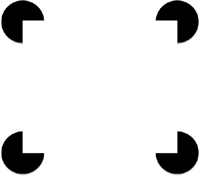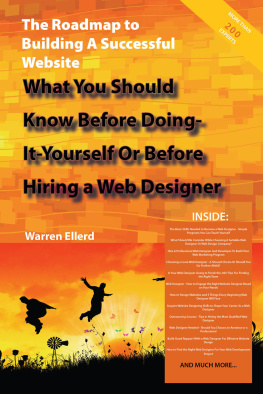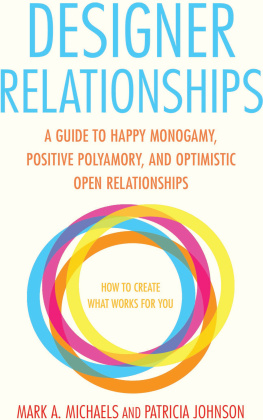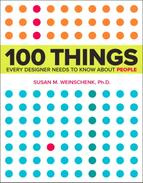100 Things
Every Designer Needs to Know About People
Susan Weinschenk, PH.D.

100 Things Every Designer Needs to Know About People
Susan Weinschenk, Ph.D.
New Riders
1249 Eighth Street
Berkeley, CA 94710
510/524-2178
510/524-2221 (fax)
Find us on the Web at: www.newriders.com
To report errors, please send a note to
New Riders is an imprint of Peachpit, a division of Pearson Education.
Copyright 2011 by Susan M. Weinschenk, Ph.D.
Project Editor: Michael J. Nolan
Development Editor: Jeff Riley
Production Editor: Tracey Croom
Copyeditor: Gretchen Dykstra
Indexer : Joy Dean Lee
Proofreader: Jan Seymour
Cover Designer: Mimi Heft
Interior Designer and Compositor: Maureen Forys, Happenstance Type-O-Rama
Notice of Rights
All rights reserved. No part of this book may be reproduced or transmitted in any form by any means, electronic, mechanical, photocopying, recording, or otherwise, without the prior written permission of the publisher. For information on getting permission for reprints and excerpts, contact .
Notice of Liability
The information in this book is distributed on an As Is basis without warranty. While every precaution has been taken in the preparation of the book, neither the author nor Peachpit shall have any liability to any person or entity with respect to any loss or damage caused or alleged to be caused directly or indirectly by the instructions contained in this book or by the computer software and hardware products described in it.
Trademarks
Many of the designations used by manufacturers and sellers to distinguish their products are claimed as trademarks. Where those designations appear in this book, and Peachpit was aware of a trademark claim, the designations appear as requested by the owner of the trademark. All other product names and services identified throughout this book are used in editorial fashion only and for the benefit of such companies with no intention of infringement of the trademark. No such use, or the use of any trade name, is intended to convey endorsement or other affiliation with this book.
ISBN 13: 978-0-321-76753-0
ISBN 10: 0-321-76753-5
9 8 7 6 5 4 3 2 1
Printed and bound in the United States of America
Dedication
Dedicated to the memory of Miles and Jeanette Schwartz.
Wish you were here to share the book with.
Acknowledgements
Many thanks to my great editing team at Peachpit, especially the late night email exchanges with Jeff Riley my development editor. Thanks to Michael Nolan (acquisitions editor) for encouraging me in writing this one and sheparding it through the process. Thanks to Guthrie Weinschenk for his photos, Maisie Weinschenk for her great ideas, and Peter Weinschenk for his support and patience. And a thank you to all those who follow my blog, come to my presentations, and in general listen to me talk about psychology. You give me valuable ideas, opinions, and are the reason I keep searching out and writing about psychology and design.
The Psychology of Design
Whether youre designing a Web site or a medical deviceor something somewhere in betweenyour audience is comprised of the people who will benefit from that design.
And the totality of your audiences experience is profoundly impacted by what you knowor dont know about them.
How do they think? How do they decide? What motivates them to click or purchase or whatever it is you want them to do?
Youll learn those things in this book.
Youll also learn what grabs their attention, what errors they will make and why, as well as other things that will help you design better.
And youll design better because Ive already done most of the heavy lifting for you. Im one of those strange people who likes to read research. Lots and lots of research. So I reador in some cases, re-read dozens of books and hundreds of research articles. I picked my favorite theories, concepts, and research studies.
Then I combined them with experience Ive gained throughout the many years Ive been designing technology interfaces.
And youre holding the result: 100 things I think you need to know about people.
How People See
Vision trumps all the senses. Half of the brains resources are dedicated to seeing and interpreting what we see. What our eyes physically perceive is only one part of the story. The images coming in to our brains are changed and interpreted. Its really our brains that are seeing.
1. What You See isnt What Your Brain Gets
, for example.
Figure 1.1. You see triangles, but they are not really there

What do you see? At first you probably see a triangle with a black border in the background, and an upside-down, white triangle on top of it. Of course, thats not really whats there, is it? In reality there are merely lines and partial circles. Your brain creates the shape of an upside-down triangle out of empty space, because thats what it expects to see. This particular illusion is called a Kanizsa triangle, named for the Italian psychologist Gaetano Kanizsa, who developed it in 1955. Now look at , which creates a similar illusion with a rectangle.
Figure 1.2. An example of a Kanizsa rectangle

The Brain Creates Shortcuts
Your brain creates these shortcuts in order to quickly make sense out of the world around you. Your brain receives millions of sensory inputs every second (the estimate is 40 million) and its trying to make sense of all of that input. It uses rules of thumb, based on past experience, to make guesses about what you see. Most of the time that works, but sometimes it causes errors.
shows how color can draw attention to one message over another.
Figure 1.3. Color and shapes can influence what people see

 If you need to see in the dark, dont look straight ahead.
If you need to see in the dark, dont look straight ahead.
The eye has 7 million cones that are sensitive to bright light and 125 million rods that are sensitive to low light. The cones are in the fovea (central area of vision) and rods are less central. So if youre in low light, youll see better if you dont look right at the area youre trying to see.
 Optical illusions show us the errors
Optical illusions show us the errors
Optical illusions are examples of how the brain misinterprets what the eyes see. For example, in the line on the left looks longer than the line on the right, but theyre actually the same length. Named for Franz Mller-Lyer, who created it in 1889, this is one of the oldest optical illusions.
Figure 1.4. These lines are actually the same length














 If you need to see in the dark, dont look straight ahead.
If you need to see in the dark, dont look straight ahead. Optical illusions show us the errors
Optical illusions show us the errors